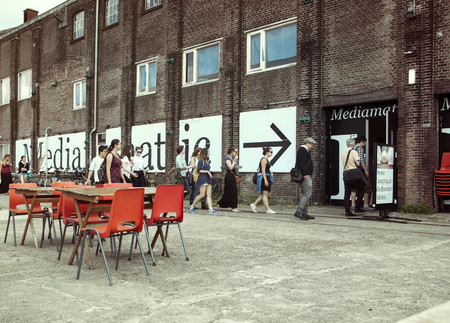By the mid seventeenth century the Amsterdam shipping wharf was in dire need of expansion. Three bits of land (Kattenburg, Wittenburg, and Oostenburg) in the east of Amsterdam were reclaimed to house the expanding industry. The Verenigde Oost-Indische Compagnie moved to Oostenburg, but by 1800 they had gone bankrupt. The shipping halls, designed by architecture firm Van Gendt, were refurnished to be used for the production of locomotives, train carriages, and diesel motors. This activity ceased in 2000, leaving the five big halls and associated buildings vacant. Stadgenoot, the current owner of the Van Gendthallen, has since been exploring new ways of using the old buildings. In collaboration with organizations and businesses that aren't afraid of experiment and risk.
In 2011 Rosa & Rita served its first steaks and pizzas on Oostenburg. Situated in a building on the Conradstraat that used to house the bathing- and dining facilities for the workers, Rosa & Rita was named after two Shell tankers that were assembled on Oostenburg.
A few months later club and cafe Amsterdam Roest opened its doors, occupying one of the large shipping halls and the former Koud Gas Gebouw, where they used to generate energy.
Moving into two of the Van Gendt halls, Mediamatic kicked-off its residency on Oostenburg with the Schommelclub, six giant swings hanging from the 16 meter high roof. Since then Mediamatic has continuously organized activities at this new location: Mediamatic Fabriek.


